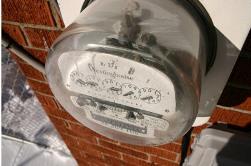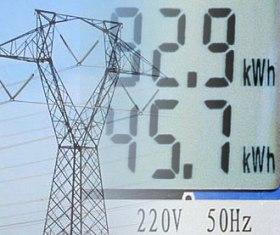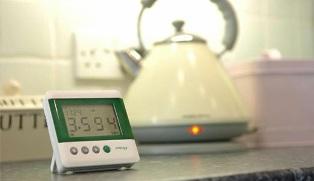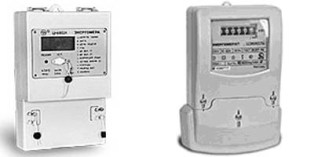Categories: Sharing experience, Electrician at home
Number of views: 36605
Comments on the article: 2
Electricity meters and multi-tariff electricity metering system
 Electricity consumption varies with the time of day. In the morning and evening, consumption increases significantly due to the lighting network and household load, during the day - due to industrial consumers. The lowest consumption occurs at night.
Electricity consumption varies with the time of day. In the morning and evening, consumption increases significantly due to the lighting network and household load, during the day - due to industrial consumers. The lowest consumption occurs at night.
Uneven energy consumption leads to an unstable load of power plants, which adversely affects the operation of their equipment. For a uniform load, generators of neighboring power plants are included in parallel operation.
High-voltage power lines included in a single system form a closed ring, which provides two-way power to consumers. When the load increases, additional generators are turned on, and when the load decreases, standby generators are turned off.
All these technical measures are designed to ensure uniform loading of the power system throughout the day. However, in addition to technical measures, there are economic measures. These include a multi-tariff electricity metering system.
Multi tariff electricity metering system implies that the day is divided into time intervals - tariff periods. In each tariff period, electricity for the final consumer has a different cost. During hours of maximum load of the power system, the cost of 1 kWh is maximum, with a minimum load - accordingly, the minimum. This economic measure stimulates the user to consume electricity during minimum hours.
A multi-tariff system is especially relevant if you use electricity for heating and hot water supply with an connected equipment capacity of more than 5 kW. Here, the cost in the tariff period of maximum and minimum loads already differs five times. When using electric heating, two electric meter - one considers electric heating, the other - the remaining consumers in the respective tariff periods.
For industrial enterprises, as a rule, the day is divided into three tariff periods - minimum (23.00-06.00), maximum (06.00-08.00 and 11.00-23.00) and peak (08.00-11.00) loads.

How to organize a multi-tariff electricity metering system?
There is nothing complicated about it. Most of the produced electronic meters allow you to create a multi-tariff metering system based on them.
The user has the opportunity to see the date and time on the electric meter, electricity consumption at all tariffs, their amount, monthly consumption over the past twelve months, average power consumption over the past three minutes. These possibilities may be different, it all depends on the software of the electric meter and the set parameters. They have both predefined standard tariffing options, and allow you to create separate tariff periods with absolutely any breakdown of the day and year into time intervals, taking into account weekends and holidays.
For example, the electric meter EE8003 / 2 allows you to organize four time daily intervals. The programming of the electric meter for operation in the corresponding tariff mode is carried out by the ASKUE service in accordance with the design documentation for the power supply of a particular object and is called parameterization. The password of protection against unauthorized access to the set parameters of the electric meter is also entered there.

Is it possible to use not electronic, but induction electric meters to organize electricity metering for tariff periods?
In principle, it is possible. But for this you need to take into account each tariff your own electric meter.Similar systems were widely used in the past, sometimes they can be found today. The bottom line is that with the help of a timer - usually a mechanical clock with an electric factory and a switching device - when a certain time comes, the corresponding counter is switched on.
Similar devices are produced now, for example, a tariff switching device TsN6802A. It is intended for the organization of two-rate electricity metering in conjunction with single-tariff electricity meters CE6807. The appearance of these devices is shown in the figure. On the left is the tariff switch, on the right is the electricity meter.

Seemingly advantages multi-tariff electricity consumption metering systems there are no obvious two opinions here. This is good for even load distribution in the power system, beneficial to the end user. But I had to face quite interesting arguments of opponents of this system. For the industrial sector, this is undeniably relevant, they say. And for household?
Imagine that you have a multi-tariff accounting system. The cheap tariff starts to operate from 22.00. And at 22.00 the whole apartment building starts washing, cleaning, cooking (if there is an electric stove), despite the fact that in the evening it is forbidden to break the silence. The power system is good, but for your neighbors :)?
And although I am skeptical about such statements, but paradoxically, there is a small fraction of truth in this judgment. There should already be common sense, and not the pursuit of cheap kilovats.
In general, a multi-tariff electricity metering system is used in all developed countries of the world. So sooner or later, and we will switch to a similar tariff system throughout the country, rather than individual consumers. Still, the economic effect is present here.
Mikhail Tikhonchuk

See also at bgv.electricianexp.com
:
